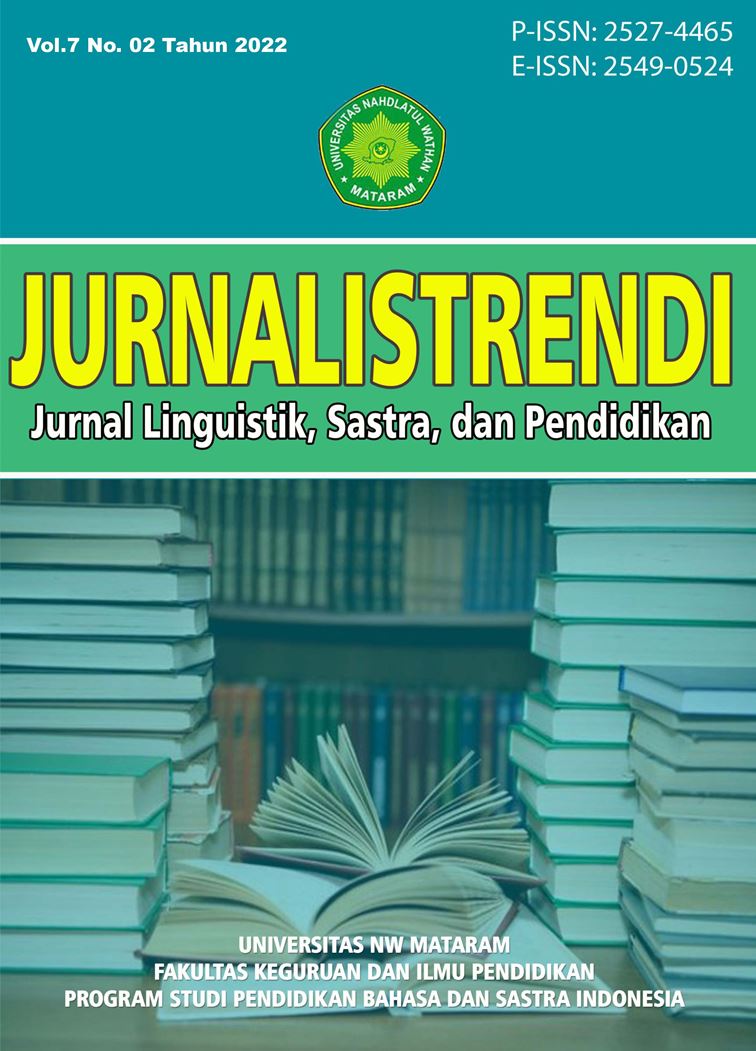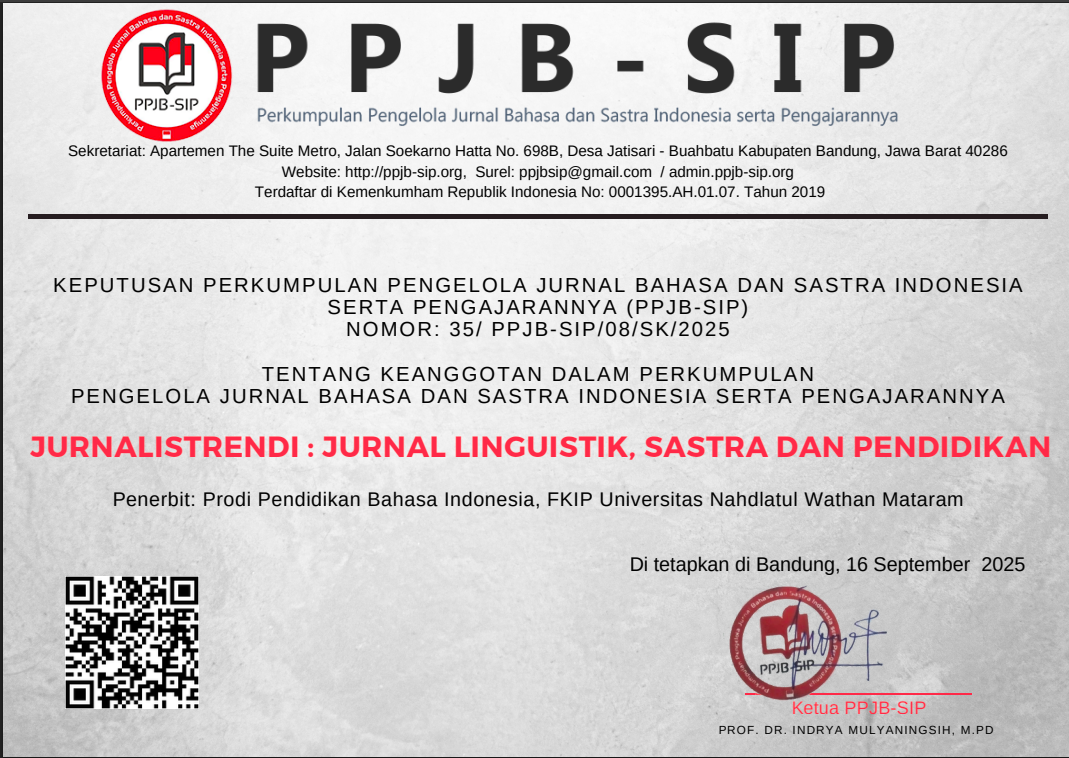Preservation And Revitalization Of Palembang Malay Language Through Traditional Art Of Dulmuluk
Abstract
This study was an ethnography study aimed to describe in depth on the preservation and revitalization of Palembang Malay language in Palembang through the traditional art of Dulmuluk. The data were collected by using interviews, observations, field notes, document studies, questionnaires, and photography. The data analysis was done by using the ethnography method of Spradley’s Developmental Sequence Research. The steps of the research were; (1) determination of focus, (2) requesting questions, (3) data collection, (4) analyzing and interpreting data. In addition, the researcher analyzed the field notes from observation on the participants to find out questions and then analyzed the field notes. There are four types of analysis that had been done namely; domain, taxonomic, component and theme analysis. Based on the analysis, the research result shows that in the traditional art of Dulmuluk, Palembang Malay language is still being preserved. The Palembang Malay language still dominates the language uses in the traditional art of Dulmuluk. It is also found that the traditional art of Dulmuluk is being faded away due to the monotonous of the story’s plot and less adapted to the development and the change of the current era so that it is hard for the traditional art of Dulmuluk to compete with the modern art. The effort that can be done to preserve and revitalize the traditional art of Dulmuluk is to create the story with the theme that is relevant to the development and the change of the current era. If it is succeed, it will also affect the preservation of Palembang Malay language. Therefore, the shift and the extinction of the Palembang Malay language can be avoided.
Downloads
References
Arka, I Wayan. (2013). Language Management and Minority Language Maintenance. Dalam Language documentation & conservation vol. 7. 2013. 89.
Aron Meko Mbete.“Masalah Kebahasaan dalam Kerangka Pelestariannya: Perspektif Linguistik”. Jurnal Tutur, (Bali: APBL, Fakultas Sastra Universitas Udayana, vol. 1 No.2, Agustus 2015 (Diakses tanggal 17 Juni 2019).
Crystal, David. (2002). Language Death. Cambridge: Cambridge University. 11.
Eric W. Wamalma. dan Stephen B.J.Oluoch.( 2013). ‘Language Endangerment and Language Maintenance: Can Endangerment Indigenous Languages of Kenya be Electronically Preserved” (India: IJHSS (International Journal of Humanities and Social Science, Vol. 3 No. 7. (Diakses tanggal 26 Desember 2019)
Fasold, R. (1984). The Sociolinguistics of Society. Cambridge: Cambridge University Press.
Grenoble, Leonore. A dan Lindsay J.Whaley. (2006). Saving Languages: An Introduction to Language Revitalization. New York: Cambridge University Press. 7-21.
Hinton, Leanne. (2011). Revitalization of Endangered Language. Dalam Peter K. Austin dan Julia Sallabank, eds, The Cambridge Handbook of Endangered Languages. Cambridge: Cambridge University Press. 291-293.
Holmes, Janet. An Introduction to Sociolinguistics. (2001). England: Pearson Education Limited. 65.
Jendra, Made Iwan Indrawan. (2010). Sociolinguistics: The Study of Socienties Languages.
Yogyakarta: Graha Ilmu.159-160.
Jimly Asshiddiqe. (2007). “Perlindungan Bahasa Daerah berdasarkan UUD 1945” Makalah Seminar Pembelajaran Bahasa dan Sastra Daerah dalam Kerangka Budaya Fakultas Bahasa dan Seni Universitas Negeri Yogyakarta, 8 September 2007.
Kridalaksana, Harimurti. (2008). Kamus Linguistik (edisi keempat). Jakarta: PT. Gramedia Pustaka Utama.178.
M.Paul Lewis, Gary F. Simons, dan Charles D. Fennig (eds.). Ethnologue: Language of the World, Eighteenth edition. (Dallas, Texas: SIL International, 2015). Diakses dari versi daring: http://www.ethnologue.com pada 17 September 2019.
Saleh, Abdullah dan R. Dalyono. (1996). Kesenian Tradisional Palembang Teater Dulmuluk.
Palembang: Proyek Pembinaan dan Pengembangan Kesenian Tradisional Palembang. 27-32.
Sumarsono dan Paina Partana. (2002). Sosiolinguistik. Yogyakarta: Penerbit Sabda.
Spradley, James P. (2007). Metode Etnografi. Yogyakarta: Tiara Wacana. 29.
Wurm, Stephen A. (ed.). (2001). Atlas of the World’s Language in Danger of Disappearing. Paris: UNESCO Publishing.


.jpg)





